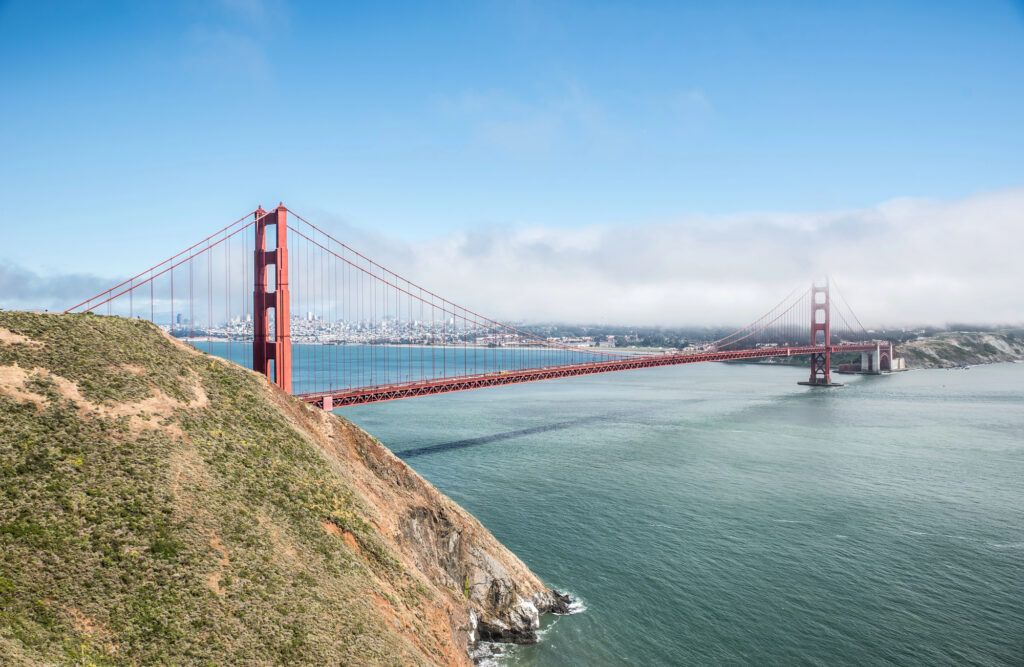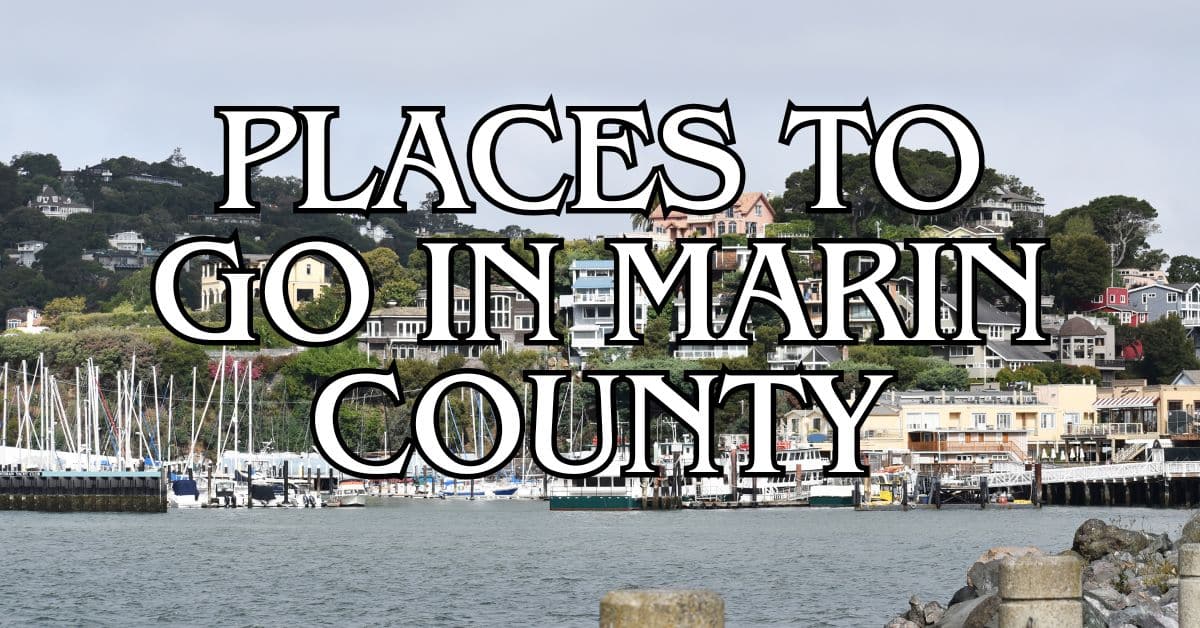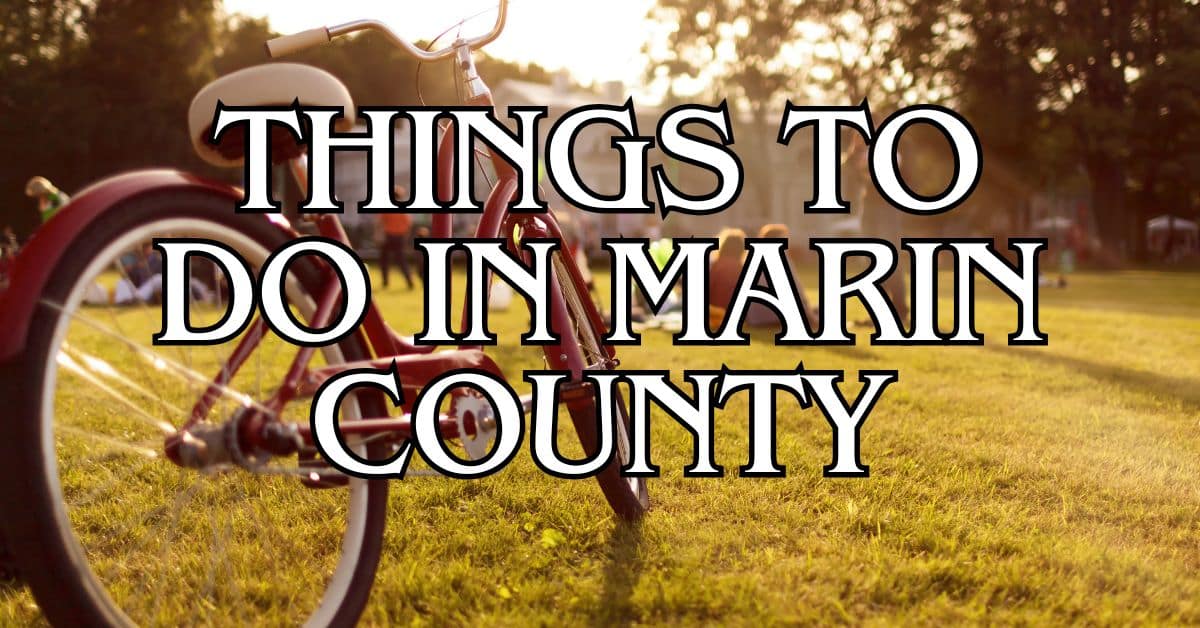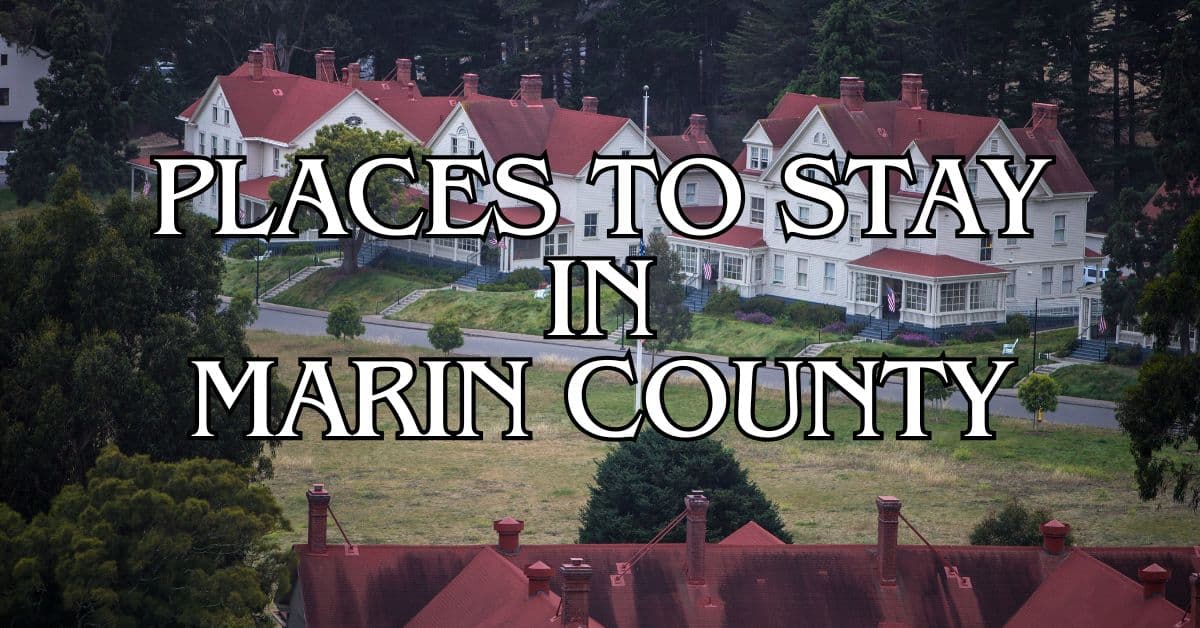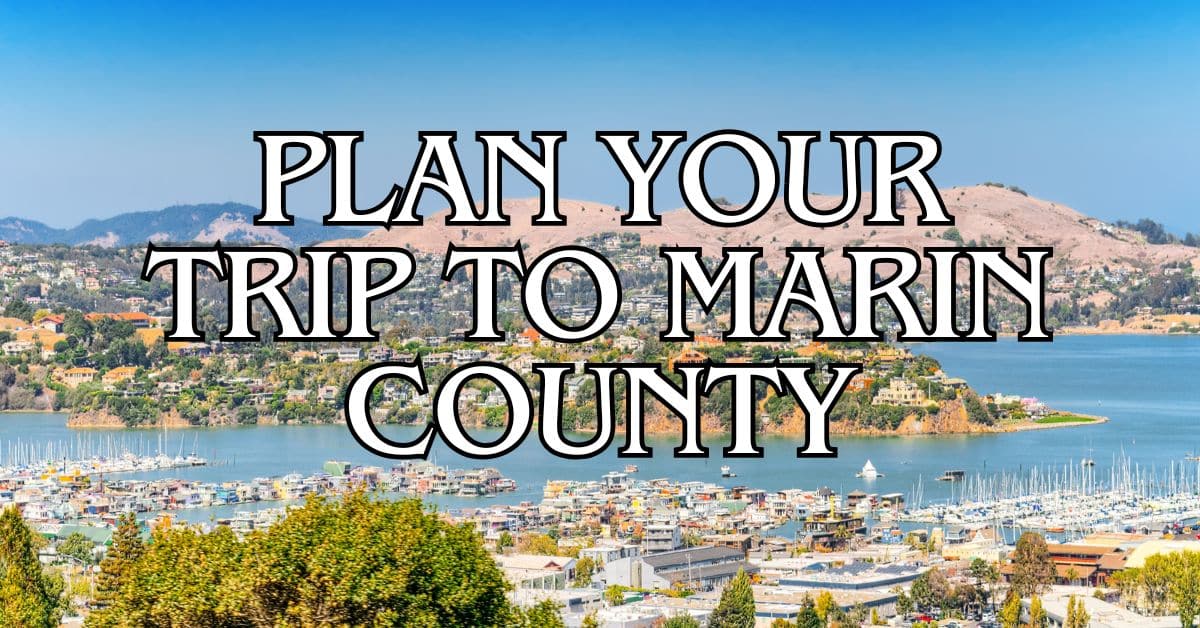The Golden Gate National Recreation Area is this wild blend of nature and history just minutes from San Francisco. The park sprawls across Marin County, offering up jaw-dropping views of the Golden Gate Bridge and the Bay. Here, you can wander four campgrounds, hike trails like the SCA Trail, and check out iconic spots like Muir Woods National Monument or the Marin Headlands.
Marin County’s slice of the park really shows off California’s wild side—coastal cliffs, endless forests, and those famous redwoods. When the fog finally rolls out and the sun breaks through, the views can stop you in your tracks. The area’s got layers of history too, stretching from indigenous cultures to Spanish colonial days.
Get a discount of 15% to 70% on accommodation in Marin County! Look for deals here:
Marin County Hotels, Apartments, B&Bs

The National Park Service keeps up a network of trails and viewpoints. You’ll stumble on great spots for hiking, picnicking, or just soaking in the scenery. The park’s north side, right across the Golden Gate Bridge, feels like a world away from the city but is super easy to reach for a quick escape.
Overview of Golden Gate National Recreation Area in Marin County
Golden Gate National Recreation Area (GGNRA) covers nearly 81,000 acres, making it one of the world’s largest urban national parks. You’ll find an amazing mix of 19 ecosystems and over 2,000 plant and animal species here.
History and Significance
The Golden Gate NRA got its start in 1972, part of a push to bring national parks closer to where people actually live. Instead of only focusing on remote wilderness, the National Park System started thinking about “parks for the people.”
History runs deep here. Old military installations are scattered around, telling stories of coastal defense from the Civil War through World War II. Battery Spencer and Fort Baker are two spots that really stand out if you’re into that sort of thing.
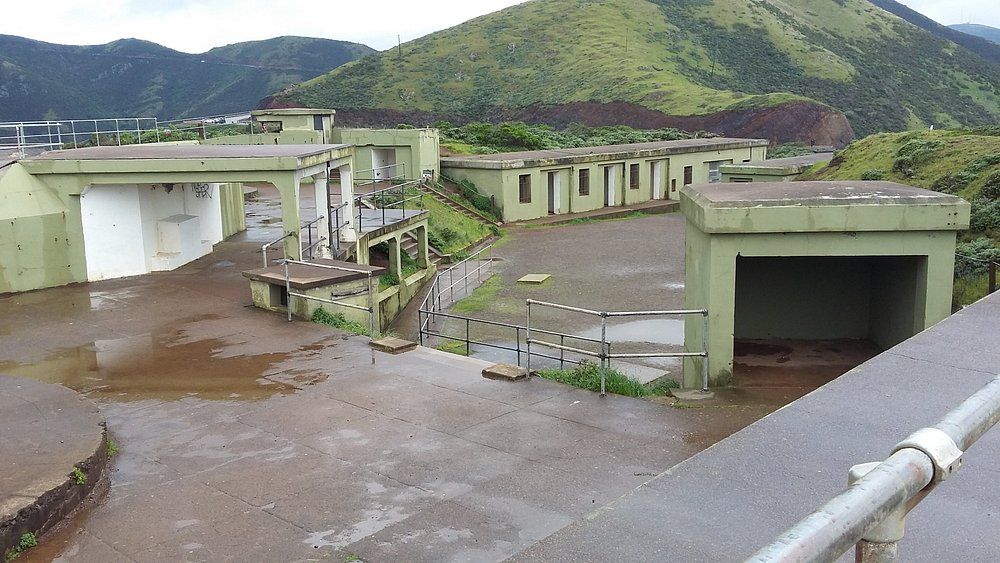
Park rangers juggle the tricky job of protecting both the wild spaces and historic sites while keeping it all open for visitors. It’s a balancing act—preserve what’s special, but let people enjoy it too. In a way, GGNRA set the bar for what an urban national park can be.
Geography and Landscape
The Marin County part of Golden Gate NRA is all about coastal bluffs, hidden beaches, and rolling hills. The Marin Headlands alone deliver sweeping views of the Golden Gate Bridge, the San Francisco skyline, and the endless Pacific.
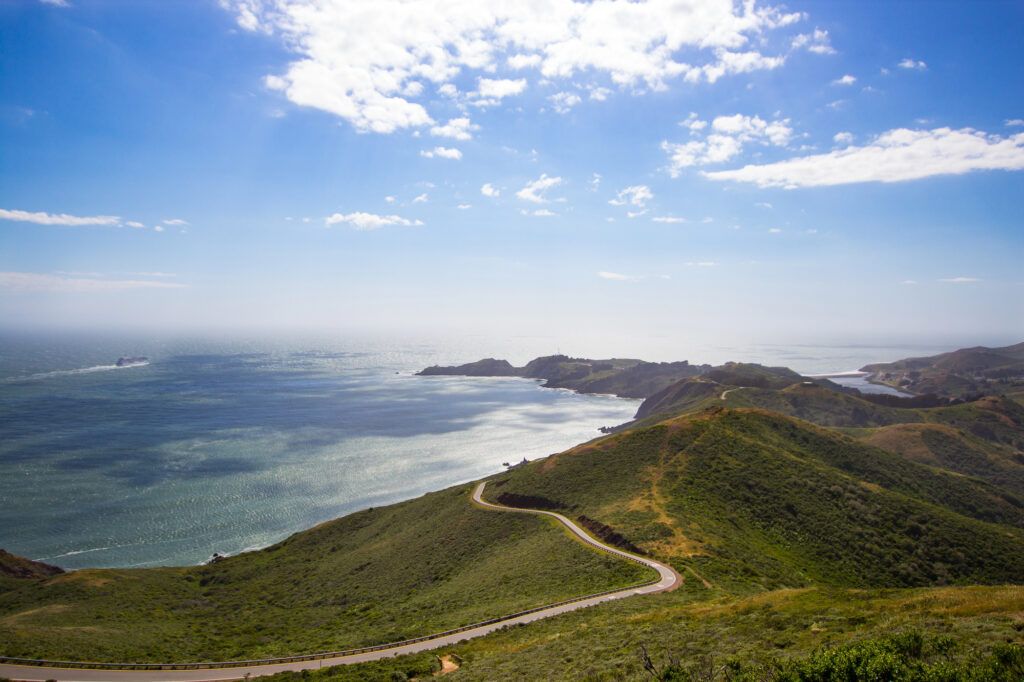
The landscape supports a surprising amount of life. You’ll see:
- Redwood groves draped in moss
- Open grasslands bursting with wildflowers
- Coastal scrub habitats
- Wetlands and stream corridors
- Rocky shores and sandy beaches
All these different landscapes mean you get little microclimates. Fog is a regular visitor, especially along the coast, and it keeps some unique plants happy. Most of this coastline hasn’t been developed, so you still get that raw, timeless California vibe.
Key Conservation Efforts
Park staff work hard to protect GGNRA’s natural resources. They’re out there pulling invasive plants and putting in native ones, one patch at a time.
Wildlife conservation matters a lot here too. The park is a lifeline for endangered species like the Mission blue butterfly and the California red-legged frog. Rangers keep tabs on these creatures and try to help them bounce back.

Climate change? Yeah, it’s a big deal. Rising sea levels threaten coastal spots, and weird weather messes with the ecosystems. The park runs monitoring programs and tries to plan ahead, but honestly, it’s a moving target.
If you’re up for it, you can actually pitch in—volunteer days let you help with habitat restoration, wildlife checks, or even trail work. These efforts help keep this stretch of coastline wild for whoever comes next.
Get a discount of 15% to 70% on accommodation in Marin County! Look for deals here:
Marin County Hotels, Apartments, B&Bs
Top Destinations and Iconic Landmarks
Golden Gate National Recreation Area in Marin County packs in some of California’s most beloved spots. These landmarks blend natural beauty, cultural history, and a bit of architectural flair that keeps millions coming back.
Golden Gate Bridge
The Golden Gate Bridge—what a showstopper. This 1.7-mile-long suspension bridge links San Francisco to Marin County, stretching across the Golden Gate Strait. Built from 1933 to 1937, its “International Orange” color makes it pop, especially when the fog rolls in.
Want the best views? Head to the Vista Point on the Marin side. There’s parking, info displays, and those classic panoramic shots of the bridge, San Francisco skyline, and bay.
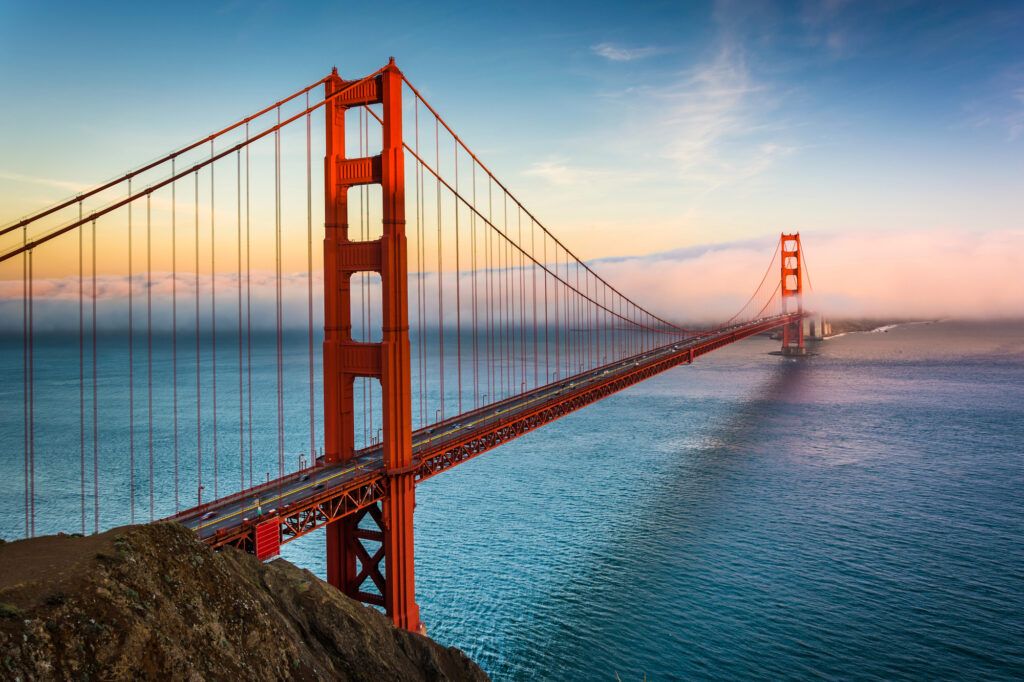
If you’re into photography, early morning or late afternoon light is your friend. Fog can sweep in during summer, making for dramatic photos.
Walking the bridge takes about 35-40 minutes each way. It’s usually windy and chilly, so bring layers. Pedestrians stick to the east sidewalk; cyclists ride on the west.
See here for the best Golden Gate Bridge Tours.
Muir Woods National Monument
Muir Woods National Monument protects one of the last old-growth redwood forests in the Bay Area. These massive trees, some over 600 feet tall and up to 1,000 years old, create a cool, peaceful retreat about 12 miles north of San Francisco.
The Miwok Indians saw this place as sacred long before it became a national monument in 1908. Now, you can wander through on boardwalks and easy trails—great for any age or ability.
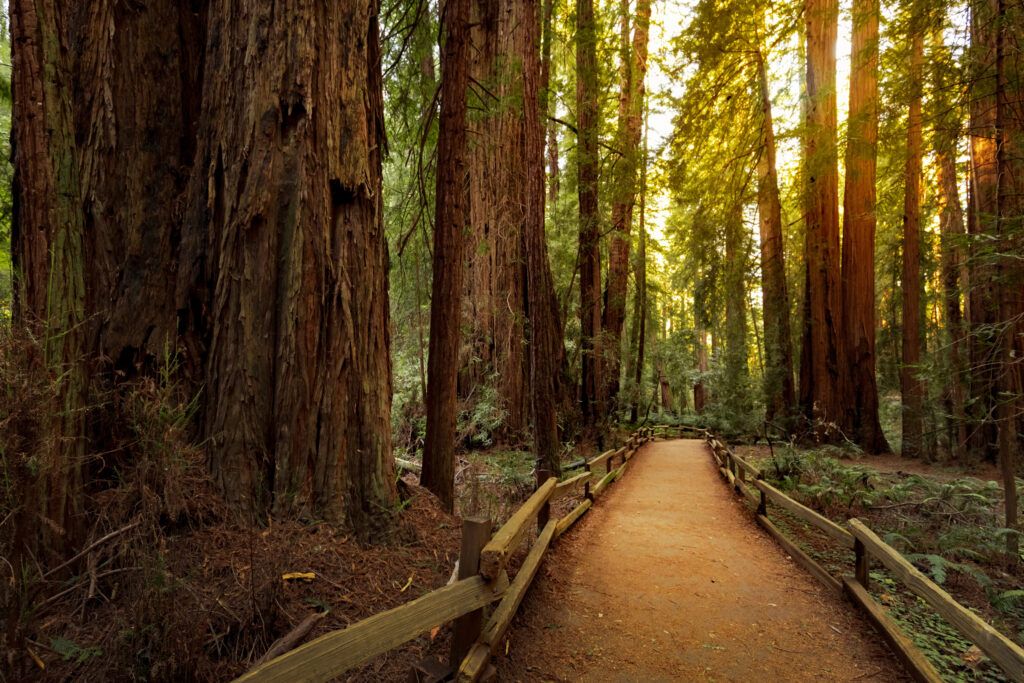
The main trail loops for 2 miles through the heart of the grove. If you want a quieter visit, try a weekday or show up before 9 AM. They do require reservations for parking and shuttles.
It stays cool here year-round (50-70°F), and most rain falls between November and April. Summer fog is actually a lifesaver for the redwoods, giving them extra moisture when it’s dry.
Click here to learn more about Muir Woods National Monument.
Alcatraz Island
Alcatraz Island technically belongs to San Francisco County, but it’s a must-see when you’re exploring the Golden Gate area. This little island was home to the country’s most infamous federal prison from 1934 to 1963—hence the nickname “The Rock.”
Some notorious folks did time here: Al Capone, George “Machine Gun” Kelly, and Robert Stroud (the “Birdman of Alcatraz”). The place got a reputation for being escape-proof, though 36 men gave it a shot in 14 different attempts.
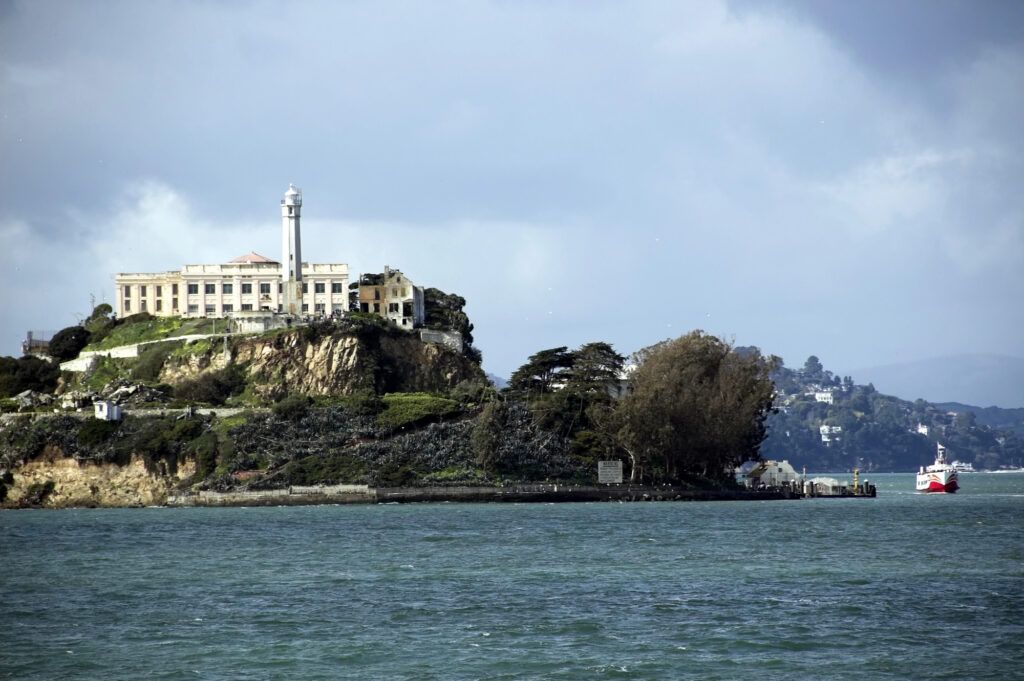
Ferries to Alcatraz leave from Pier 33 in San Francisco. Tickets sell out fast, especially in summer, so book well ahead. The audio tour, voiced by former guards and inmates, really brings the place to life.
Besides its prison days, Alcatraz also has Civil War-era buildings, natural features, and reminders of the 1969-1971 Native American occupation that brought attention to indigenous rights issues.
Click here to see the best Alcatraz tours.
Exploring the Marin Headlands
The Marin Headlands is a sweet mix of raw scenery, military history, and those unbeatable Golden Gate Bridge views. You’ll find hiking trails, historic spots, and wild geology—all just a quick drive from San Francisco.
Marin Headlands Visitor Center
Start at the Visitor Center, set in an old military building at Fort Barry. You’ll get maps, exhibits, and ranger tips to kick off your adventure.
Inside, you’ll find displays on the area’s natural history, native plants, and wildlife. They break down how the headlands formed—think tectonic plates smashing together—so you can appreciate those weird rock formations outside.
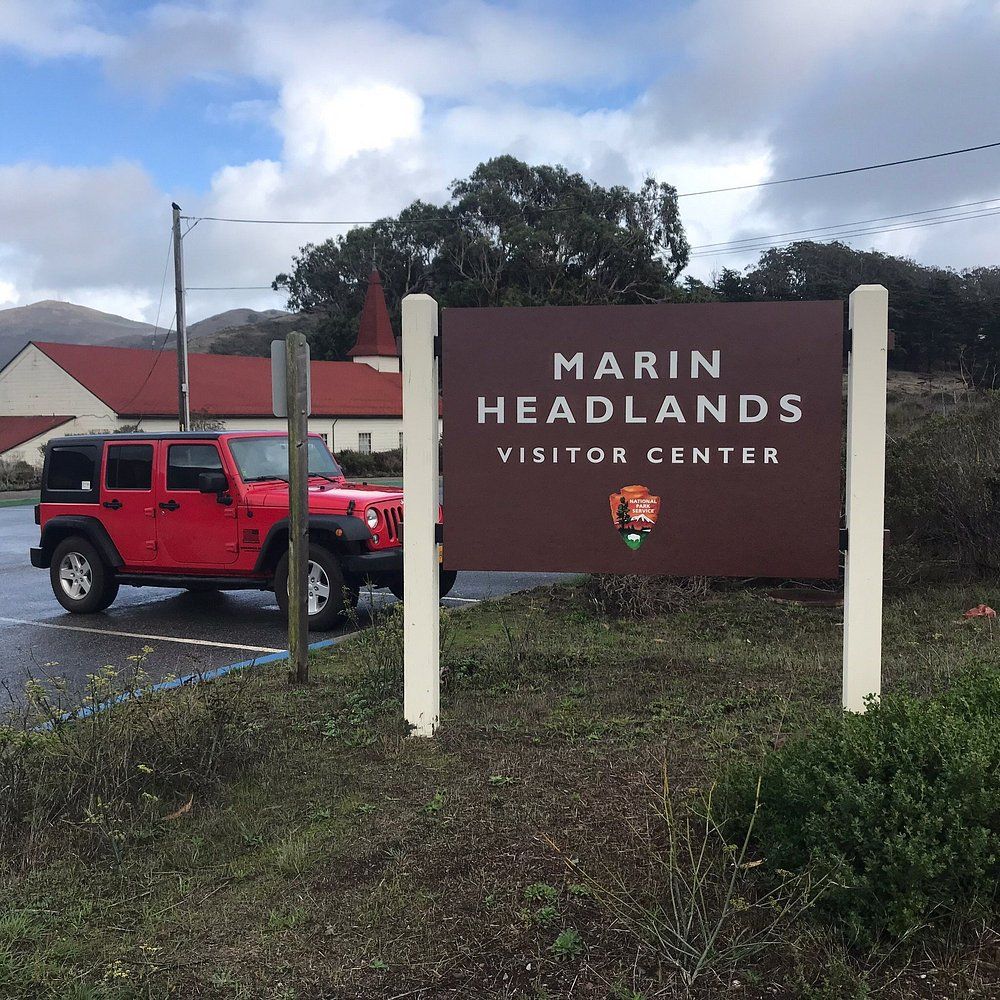
Rangers give solid advice on which trails to hit, depending on your mood or how much time you’ve got. Want coastal views? Wildflowers? History? Just ask.
Hours change with the seasons, so check the National Park Service website before you go. Sometimes they host special programs about local ecology or history.
Fort Baker and Fort Barry
These old military sites once guarded San Francisco Bay from the late 1800s through World War II. Now, you can wander around and get a feel for what coastal defense was all about.
Fort Baker sits right below the bridge’s north end. Its historic buildings now house Cavallo Point Lodge, a fancy hotel with restaurants that anyone can visit. There’s also the Bay Area Discovery Museum for families with kids.
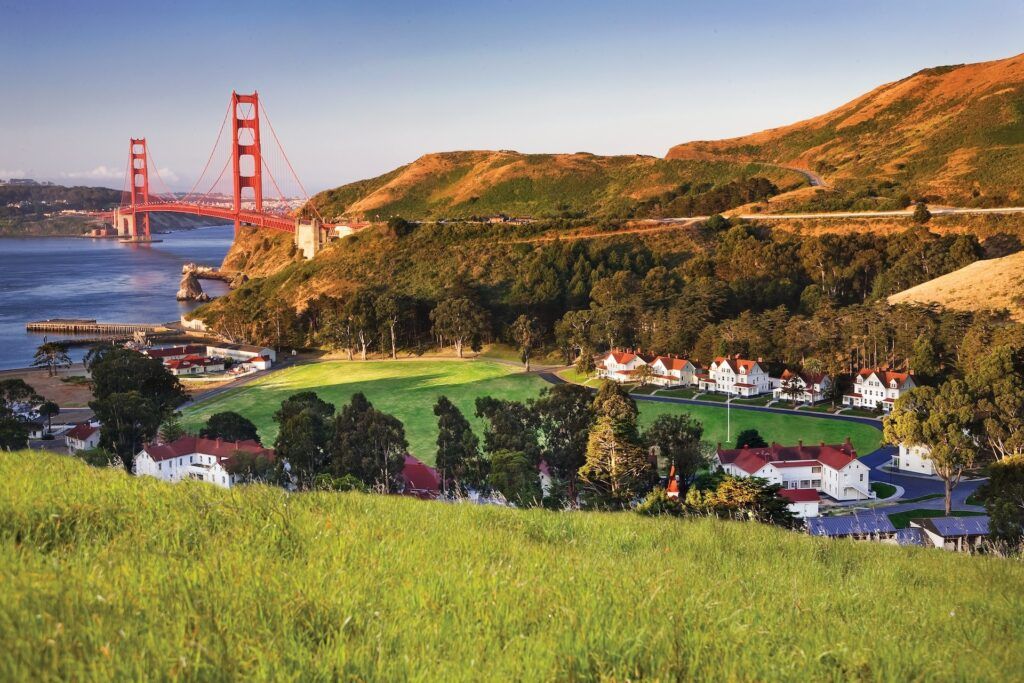
At Fort Barry, you’ll find old artillery batteries and bunkers. Battery Mendell and Battery Alexander are especially cool—big concrete structures that once held massive guns pointed at the ocean.
The Nike Missile Site at Fort Barry sometimes opens for tours, giving you a peek into the Cold War era defenses that once protected the bay.
Point Bonita Lighthouse
This working lighthouse sits dramatically at the tip of the headlands. Built in 1855 and later moved, it still guides ships through the Golden Gate strait.
To get there, you walk through a tunnel carved by hand and then cross a suspension bridge over crashing waves. The half-mile trail offers sweeping ocean views and maybe even a glimpse of whales or seabirds.

The lighthouse only opens to visitors Thursday through Sunday, 12:30 to 3:30 PM. It’s a tight window, so plan ahead if you want to see it up close.
Volunteers share stories about shipwrecks, foghorns, and what life was like for lighthouse keepers. Even on sunny days, it gets windy out there—bring a jacket!
Fort Barry Chapel
This little white chapel, built in 1941, served the troops at Fort Barry. Today, it’s a peaceful historic site tucked among cypress trees.
It’s simple inside—stained glass, wooden pews, nothing fancy. The quiet atmosphere stands out, especially with all the military history around it.
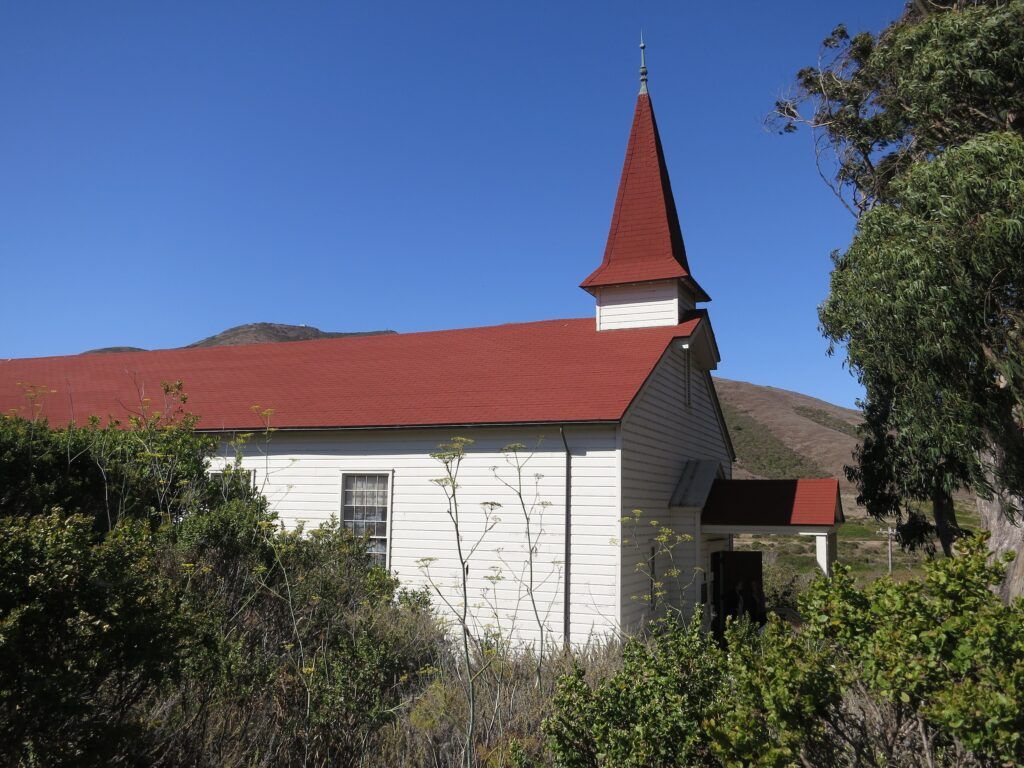
It’s not always open, but you can admire the outside and read a bit about its story on the info panels. The chapel looks out over Rodeo Lagoon, offering a nice spot to pause and reflect. Honestly, it’s a moving place—a reminder of the human side of military life.
Get a discount of 15% to 70% on accommodation in Marin County! Look for deals here:
Marin County Hotels, Apartments, B&Bs
Beaches and Coastal Attractions
The Golden Gate National Recreation Area in Marin County lines up some seriously beautiful beaches and coastal stretches. Whether you want wild views, outdoor fun, or just to watch the waves, there’s a beach for you—some sandy, some rocky, all worth a stop.
Baker Beach
Baker Beach runs along the western edge of the Presidio, showing off killer views of the Golden Gate Bridge and Marin Headlands. It’s a mile of sand that draws crowds all year.
The north end is clothing-optional, so families usually stick to the south. You’ll find picnic tables, grills, and restrooms nearby.

Swimming here isn’t safe—the currents are strong and the water is freezing. Instead, go for sunbathing, fishing, or snapping photos. The bridge as a backdrop makes this a favorite for sunset shots.
Parking’s available, but it fills up fast on weekends and holidays. If you can, try a weekday or get there early to snag a spot.
Click here to see beaches in Marin County.
Muir Beach and Overlook
Muir Beach is a cozy cove tucked between rolling hills, about 16 miles north of San Francisco. The beach has soft sand, a peaceful lagoon, and hiking trails nearby—honestly, it feels a bit like a secret hideaway.
The updated parking area makes access easier, with a boardwalk that helps protect the wetlands. There are restrooms and picnic tables if you want to spend a while here.
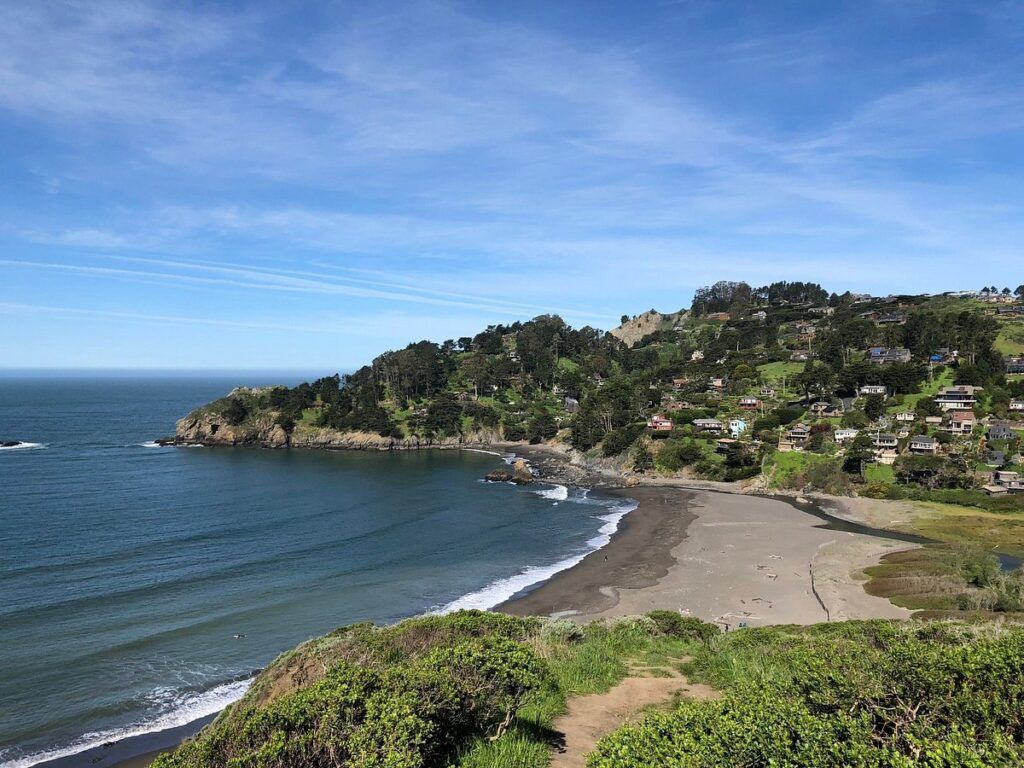
Just north of the beach, Muir Beach Overlook opens up to sweeping views of the Pacific. From up here, you can spot the rugged coastline and, if you’re lucky and in the right season, maybe even catch a glimpse of migrating whales.
Old concrete bunkers from World War II are scattered around the overlook—kind of eerie, but fascinating to poke around. Short trails lead to different viewpoints where waves slam into the rocks far below.
Click here to read about Muir Beach.
Beautiful Beaches Along the Coastline
Rodeo Beach stands out because it’s covered in smooth, colorful pebbles instead of sand. Beachcombers love it here—sometimes you’ll find bits of jade, carnelian, or agate glinting in the sun.
Tennessee Valley Beach is at the end of a mellow 1.7-mile trail. It’s a quiet, tucked-away spot—less crowded than most beaches around here, and definitely worth the walk.

Stinson Beach, with its wide sandy shoreline, is one of the few spots where swimming is sometimes safe. Lifeguards are usually around in the summer.
Black Sands Beach is dramatic—dark sand (thanks to minerals eroding from the cliffs) and a steep trail that keeps crowds away. If you make the trek down, you’ll probably have plenty of space to yourself.
Click here to see beaches in Marin County.
Rip Currents and Beach Safety
Rip currents are no joke along Marin County beaches. These powerful, narrow flows can yank even strong swimmers out to sea before you know it.
If you get caught in a rip current, don’t fight it head-on. Swim parallel to the shore until you’re out of the pull, then head back in. And hey, wave or yell for help if you need it—no shame in that.
The water here is cold—rarely above 60°F (15°C)—so hypothermia is a real risk. If you’re planning to go in, a wetsuit’s a good idea.
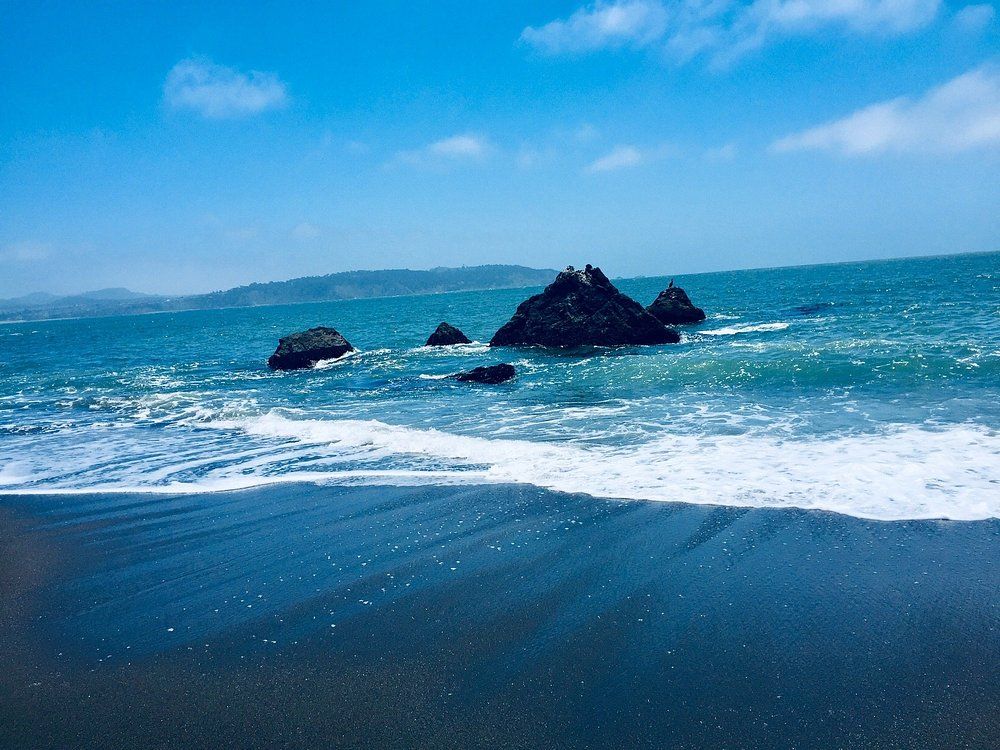
Always check beach signs for current warnings. Red flags mean dangerous conditions—please, don’t ignore them just for a selfie or thrill.
Parents, keep your kids close to you near the water. Even shallow spots can turn dangerous fast when a big wave rolls in unexpectedly.
Hiking and Outdoor Activities
Marin County’s piece of the Golden Gate National Recreation Area is packed with some of the Bay Area’s best outdoor adventures. There are over 140 miles of trails here—think ocean views, wild landscapes, and something for every skill level.
Popular Hiking Trails
The Coastal Trail is a favorite for good reason—killer views of the Pacific and the San Francisco skyline, plus the salty breeze. It’s moderately tough and runs along dramatic cliffs. Set aside a couple hours if you want to soak it all in.
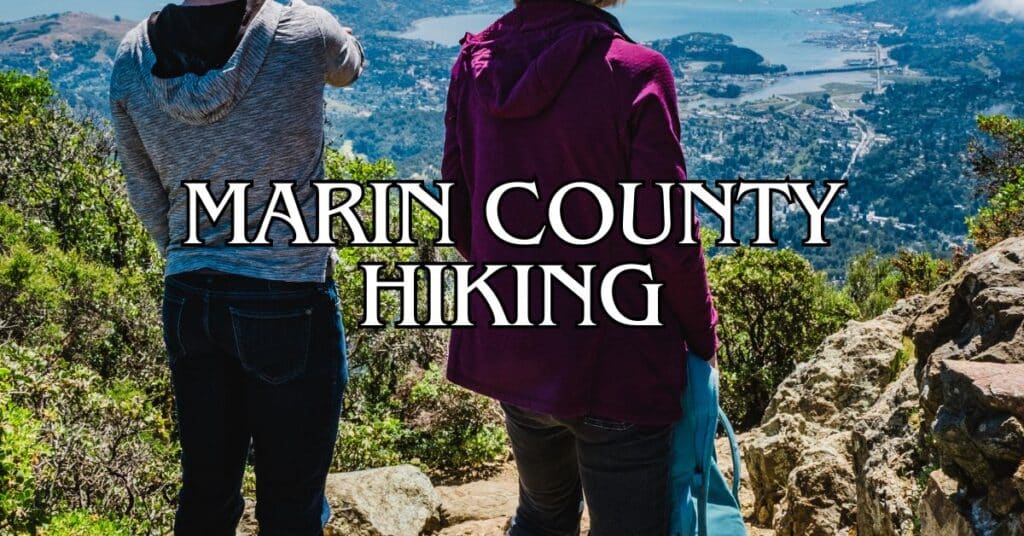
The Miwok Trail is a bit more demanding, but the payoff is huge: 360-degree views of San Francisco Bay, the Pacific, and Mt. Tamalpais. The open grasslands here explode with wildflowers in spring.
For families or anyone looking for something easy, the Rodeo Lagoon Trail loops 1.5 miles around a freshwater lagoon. You’ll probably see shorebirds and some unusual plants along the way.
Click here to see our favorite Marin County Hiking Trails.
Tennessee Valley Adventures
Tennessee Valley is a bit of a secret in Marin’s outdoor scene. The Tennessee Valley Trail is a gentle 3.4-mile round trip to a pretty secluded beach. It’s friendly for all ages, and you might spot some local wildlife if you’re lucky.
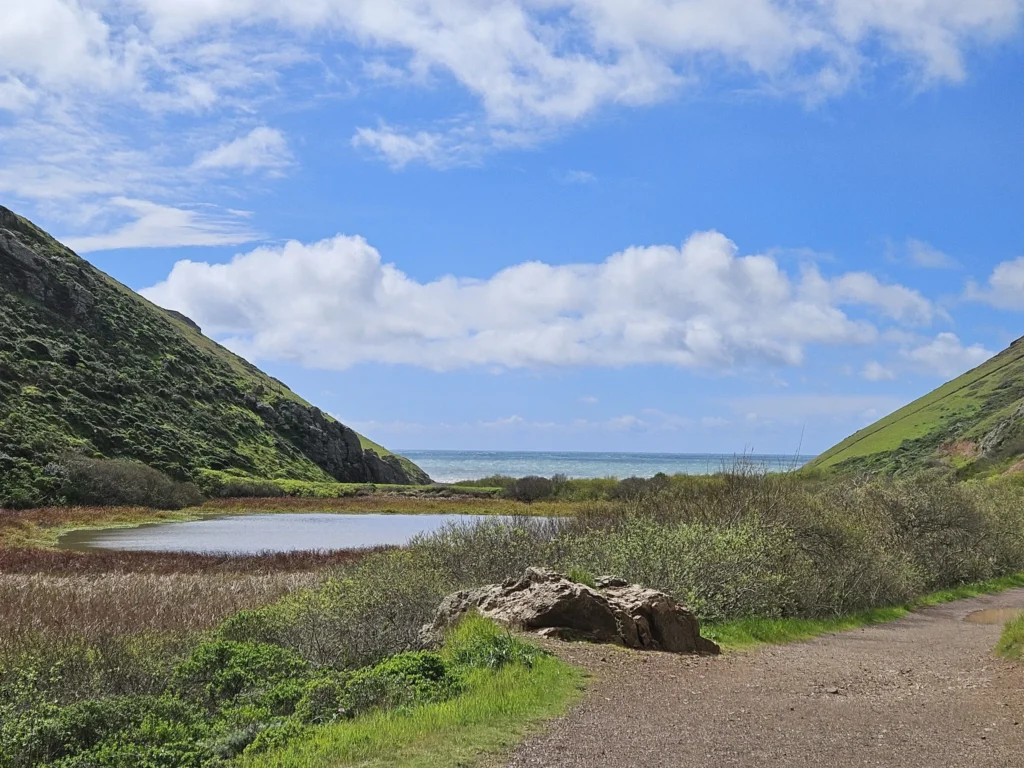
(Photo Courtesy of April Strong-Murrell)
If you’re feeling more ambitious, you can branch off to the Fox Trail or Coastal Fire Road for higher-up views of the valley—these make great loop hikes between 4 and 6 miles.
Birders, bring your binoculars. You’ll see red-tailed hawks, kestrels, maybe even a golden eagle soaring over the valley. It’s a treat.
Click here to learn more about Tennessee Valley.
Horseback Riding Experiences
If you want to see Marin from a different vantage point, try horseback riding on the equestrian trails scattered through the park. A few stables near Tennessee Valley offer guided rides for all experience levels.
Miwok Livery Stables runs tours along horse-friendly trails, giving you unique views of Mt. Tamalpais and the coast. Book ahead, especially in summer—it gets busy.
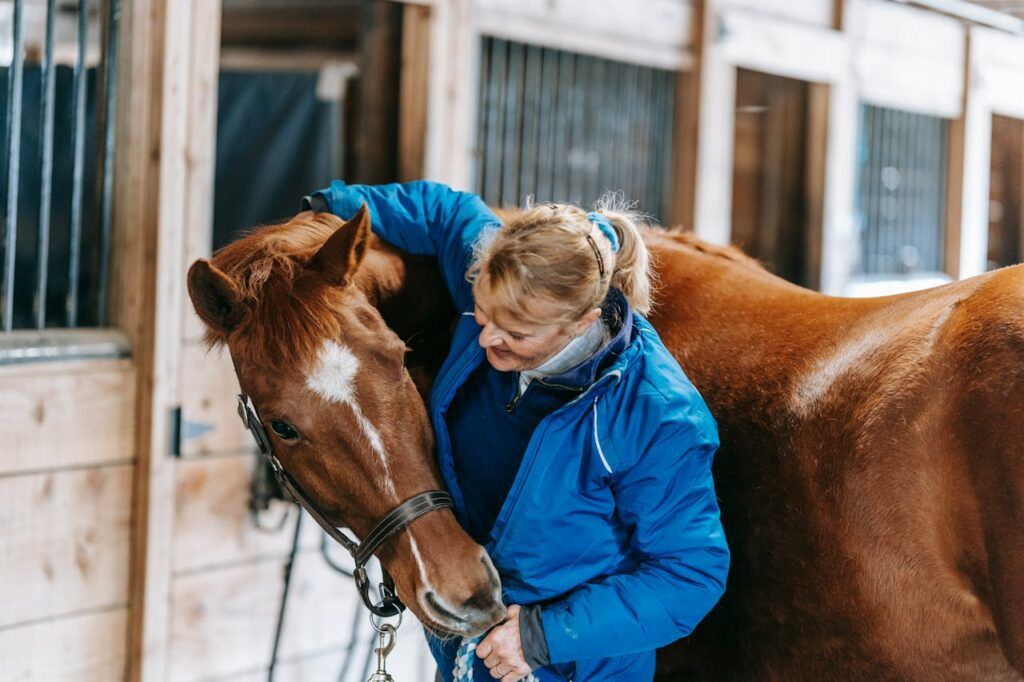
If you’re an experienced rider, the Bolinas Ridge Trail is a standout. It’s a 10-mile trek with sweeping views, winding through redwoods, open meadows, and coastal scrub.
Always check trail conditions before heading out—some close for maintenance or to protect habitats. Most guided rides include basic safety tips and gear, so you’re set.
Click here to learn more about Outdoor Activities in Marin County.
Wildlife and Natural Wonders
The Golden Gate National Recreation Area is a hotspot for nature lovers. With 19 different ecosystems, this place is crawling (in the best way) with plant and animal life all year round.
Native Flora and Fauna
Over 2,000 plant and animal species call the park home, which is wild considering how close it is to the city. As you hike, you’ll pass through coastal grasslands (bursting with wildflowers in spring), foggy forests, and breezy ridgelines.

Keep an eye out for black-tailed deer at dawn or dusk. You’ll see red-tailed hawks and turkey vultures riding the wind overhead, and if you’re lucky, maybe a coyote in the meadows. These lands have deep roots—Miwok Indians managed the area for thousands of years, living in sync with the landscape.
Each season brings something different. Spring is all about wildflowers; fall is peak time for bird migration.
Marine Life and Seal Rock
The Marin Headlands coastline is prime territory for spotting marine mammals. Seal Rock is a favorite hangout for harbor seals—you’ll see them lounging on the rocks when the tide’s low.
From the cliffs, you might catch gray whales migrating between December and May. Binoculars help, but sometimes you’ll spot their spouts with the naked eye. California sea lions bark from offshore rocks—if you don’t see them, you’ll definitely hear them.

Check out the tidepools at low tide; you’ll find sea stars, anemones, and crabs. Tidepooling is best at minus tides—just remember to tread lightly and leave things as you found them.
For the best wildlife sightings:
- Morning: Calmer water, better visibility
- Winter/spring: Best whale watching
- Low tide: Great for seals and tidepools
Click here to learn more about whale watching in Marin County and viewing seals in Marin County.
Get a discount of 15% to 70% on accommodation in Marin County! Look for deals here:
Marin County Hotels, Apartments, B&Bs
Historic Sites and Museums
Marin’s stretch of the Golden Gate National Recreation Area is packed with history. From old military outposts to dairy ranches and unique museums, these places tell the story of the region’s past.
Military Installations: World War I and II
The Marin Headlands has some of the best-preserved military sites around. Fort Cronkhite and Fort Barry still stand as reminders of the coastal defense systems built to protect the Bay during both world wars.
Battery Townsley, finished in 1940, once held massive 16-inch guns that could fire 25 miles out to sea. You can tour the restored battery on Sunday afternoons—it’s a window into a different era.
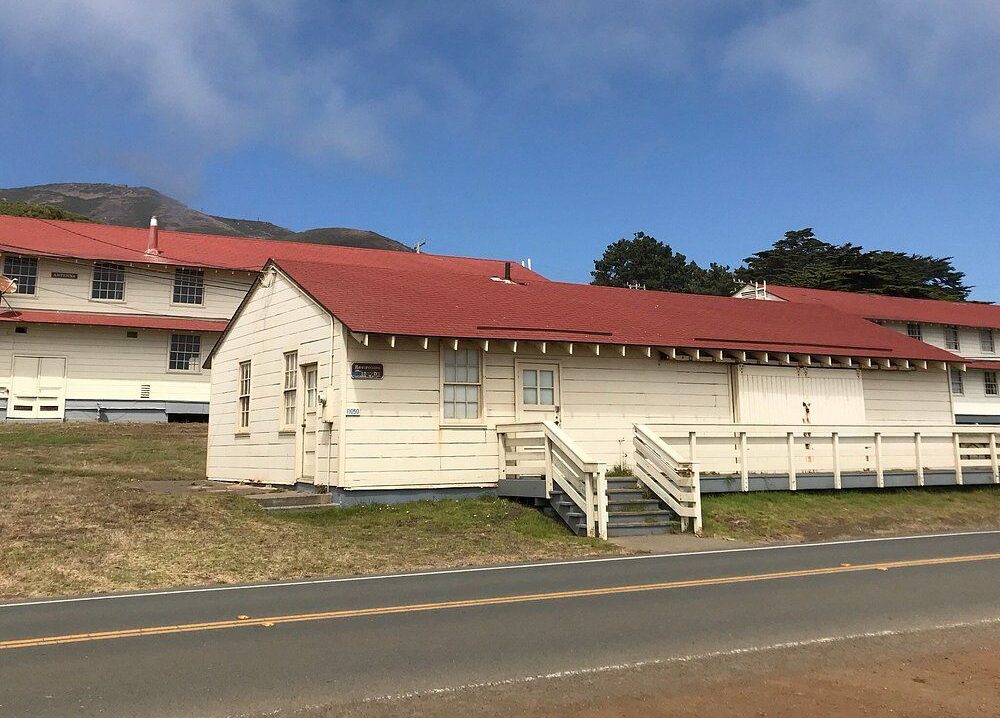
The Nike Missile Site SF-88 is the only fully restored Cold War missile site in the country. Guided tours walk you through how these missiles would’ve been used to defend against Soviet bombers. It’s a little surreal, honestly.
Point Bonita’s historic lighthouse has been guiding ships through the Golden Gate since 1855—worth a visit if you’re into maritime history.
Click here to learn more about Fort Cronkhite.
Dairy Farms and Agricultural History
Before this became parkland, Marin’s coast was dotted with dairy farms. Pierce Point Ranch shows off this history with old barns, creameries, and ranch houses from the 1850s.
Remnants of Portuguese and Irish dairy operations still scatter the Headlands. These ranches supplied milk and cheese to San Francisco through the late 1800s and early 1900s.
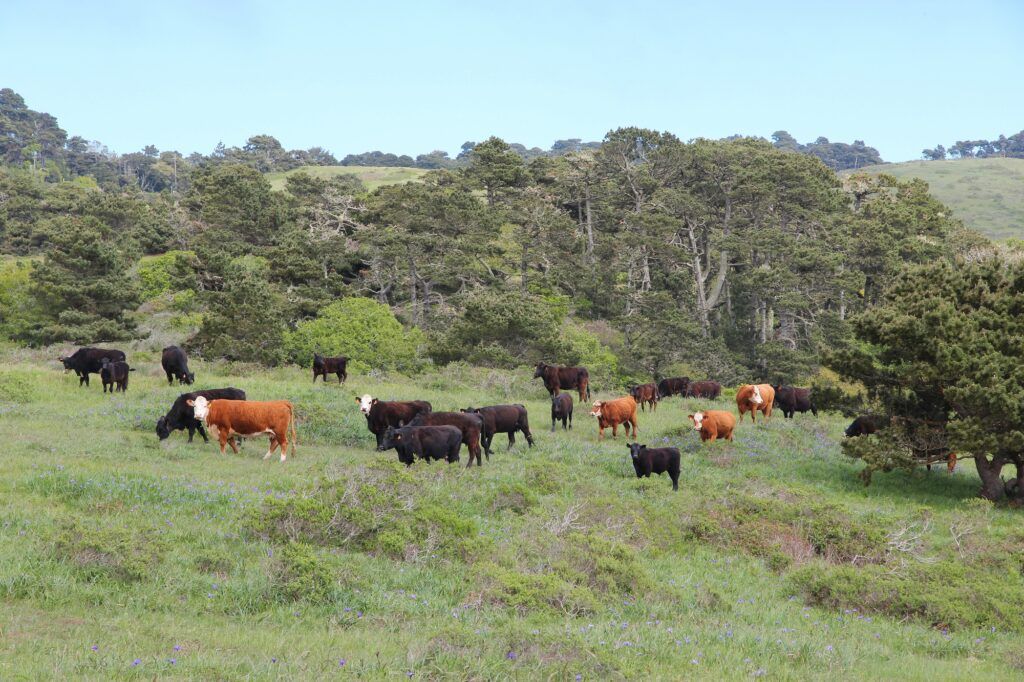
At Slide Ranch, you can see sustainable farming in action—programs here connect visitors with the land and local food traditions.
Interpretive signs along the trails explain how these old dairy operations shaped the hills, from terraced slopes to drought-resistant plants brought by European settlers.
Click here to learn more about Culinary Adventures in Marin County.
Nearby Towns and Communities
The Golden Gate National Recreation Area is surrounded by towns with their own personalities. Whether you’re after good food, quirky shops, or a change of pace, these spots add a lot to any visit.
Sausalito Attractions
Sausalito is just across the Golden Gate Bridge from San Francisco and makes a perfect stop on your Marin County adventure. This waterfront town has a Mediterranean vibe and knockout views of the city skyline.
Start your wander at Bridgeway Promenade—galleries, boutiques, and a lively atmosphere. The waterfront restaurants serve up fresh seafood; Fish Restaurant is a local favorite for sustainable catches.
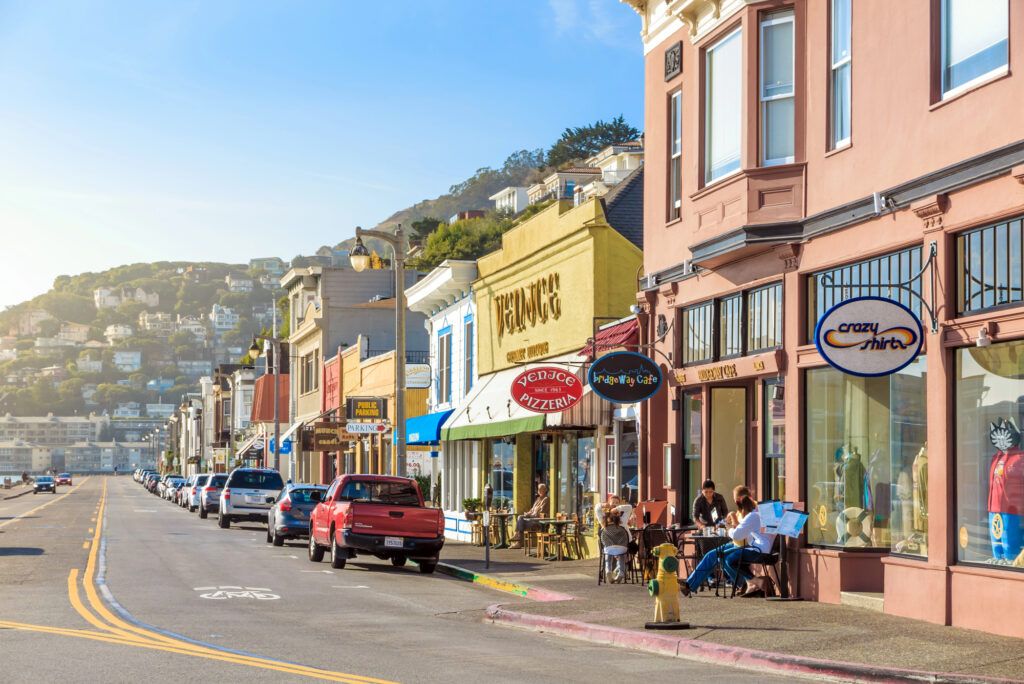
Don’t skip the famous houseboats in Richardson Bay. Some are whimsical, others are downright luxurious, and all have stories. You can check them out from the public walkway near Liberty Ship Way.
The Bay Model Visitor Center is worth a look too. It’s got a working hydraulic model of the entire San Francisco Bay—covers more than 1.5 acres. Plus, it’s free.
Click here to learn more about Sausalito.
Exploring San Francisco
San Francisco sits just across the Golden Gate Bridge from Marin County, so it’s an easy hop for a day trip or a longer stay. The city’s a patchwork of neighborhoods and world-famous sights—there’s always something to check out.
Start at Fisherman’s Wharf to watch the sea lions at Pier 39 and grab a sourdough bread bowl stuffed with clam chowder. Afterward, you might want to jump on a cable car over to Union Square for some shopping, or wander into Chinatown—the oldest one in North America, by the way.
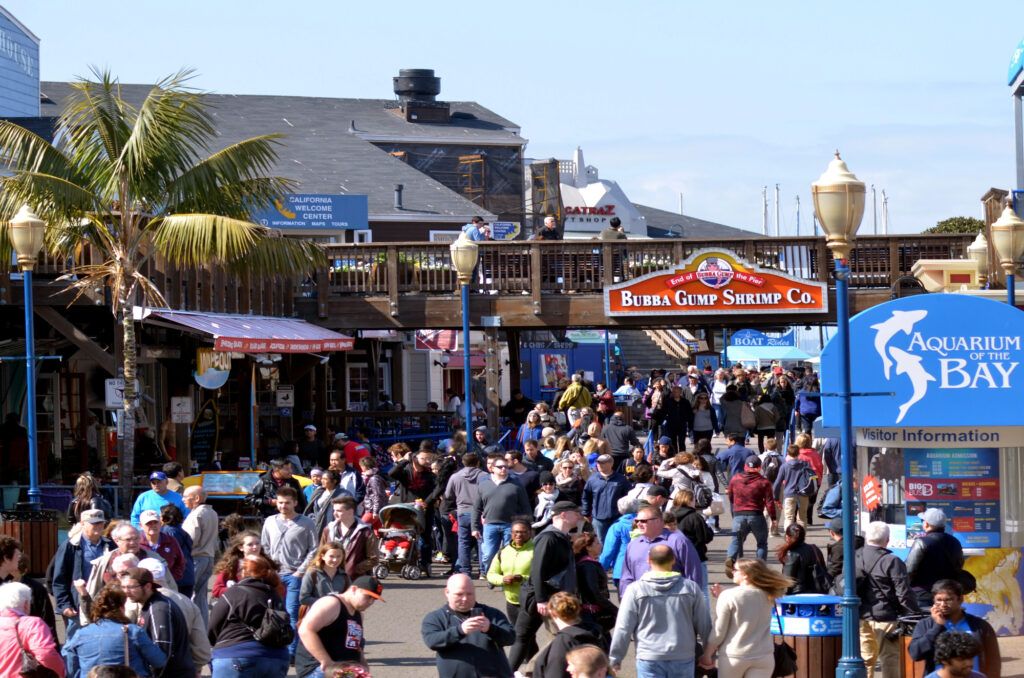
Golden Gate Park can easily eat up half a day. Inside, you’ll find:
- California Academy of Sciences
- de Young Museum
- Japanese Tea Garden
- Conservatory of Flowers
The Mission District bursts with colorful murals and hip restaurants, plus Dolores Park, which has some of the best city views around. Photographers, don’t skip Twin Peaks for sweeping shots of the whole Bay Area.
Click here to see the best tours of San Francisco.
Visiting the Presidio
The Presidio, a former military base, sprawls across 1,500 acres at the southern end of the Golden Gate Bridge. These days, it’s a park packed with trails, history, and unbeatable views—it really does feel like a gateway between San Francisco and Marin.
Baker Beach gives you killer views of the bridge and the Marin Headlands. It’s a chill spot for an afternoon picnic or catching the sunset. Just a heads up: the north end is clothing-optional, if that’s your thing or not.
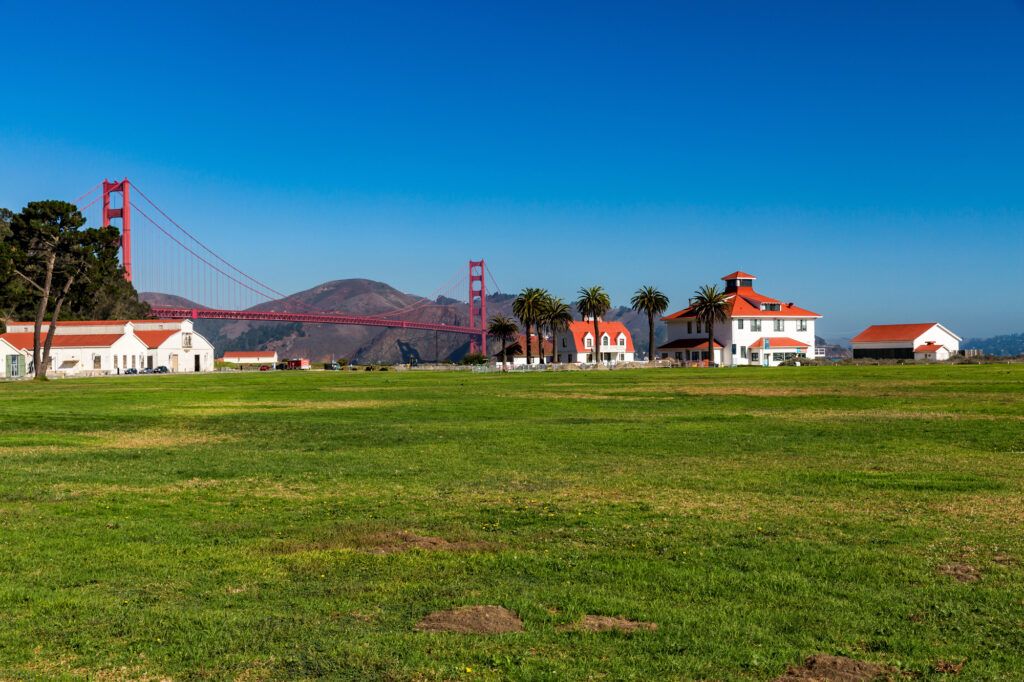
History buffs should swing by the Presidio Officers’ Club, the city’s oldest building (it dates to 1776). Inside, the free Presidio Museum shares stories from its military past.
The Walt Disney Family Museum is a bit of a surprise, tucked into the Presidio. It’s interactive and tells Walt’s story in a way that’s actually pretty inspiring. Not far away, Crissy Field’s wetlands have walking paths with more bridge views.
Dining here is better than you’d expect for a park—try Sessions at the Presidio or grab a bite at the Warming Hut by the water.
Get a discount of 15% to 70% on accommodation in Marin County! Look for deals here:
Marin County Hotels, Apartments, B&Bs
Scenic Drives and Transportation
Getting around the Marin Headlands in Golden Gate National Recreation Area takes a little planning. The region’s scenic drives and various transit options make it easier to reach all the good stuff, but it pays to think ahead.
Conzelman Road Highlights
Conzelman Road is easily one of the most jaw-dropping drives in the Bay Area. The road twists for about five miles from the north end of the Golden Gate Bridge up into the Marin Headlands, with crazy views at every turn.
Battery Spencer sits just a mile from where Conzelman starts. It’s probably the single best spot for that classic Golden Gate Bridge photo, but parking’s tight—get there early if you can.
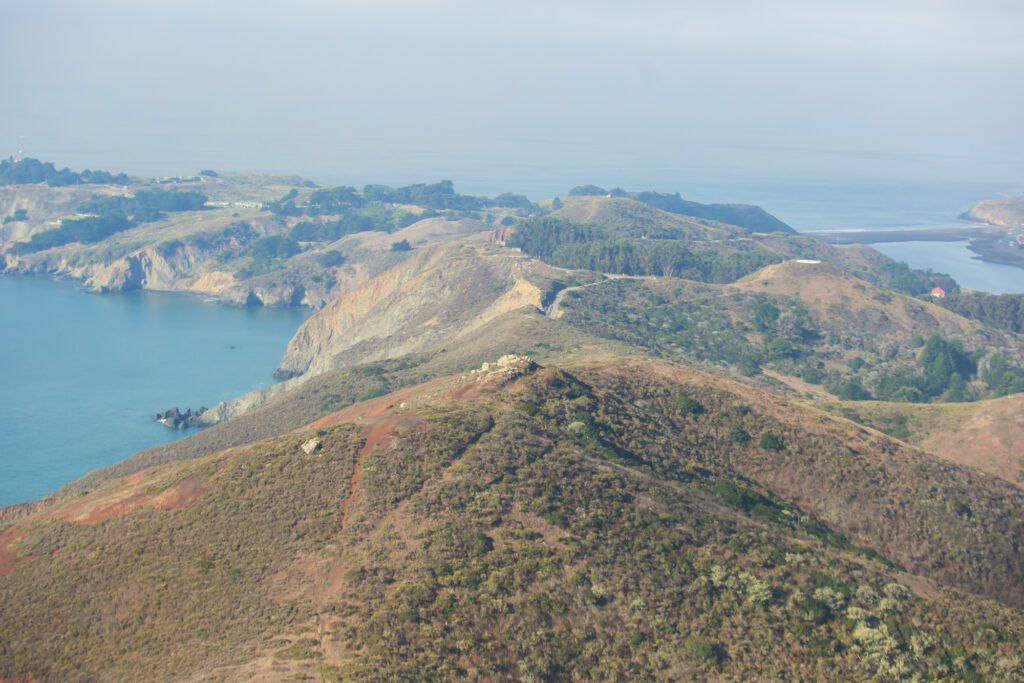
Hawk Hill, about two miles in, rises to 923 feet. From up there, you get 360-degree views of San Francisco, the Pacific, and the Bay. In fall, it’s also a hotspot for watching migrating birds.
After Hawk Hill, the road turns one-way and winds down toward Point Bonita Lighthouse. There are several pullouts for snapping photos along the way.
Marin Transit and Highway 1
If you prefer not to drive, public transit is a solid option for visiting the Headlands. Marin Transit runs Route 61 on weekends and holidays from Sausalito to Tennessee Valley, Muir Woods, and Muir Beach.
The West Marin Stagecoach (Route 61) follows Highway 1, linking up with trailheads and beaches. It’s especially handy in summer when parking becomes a hassle.
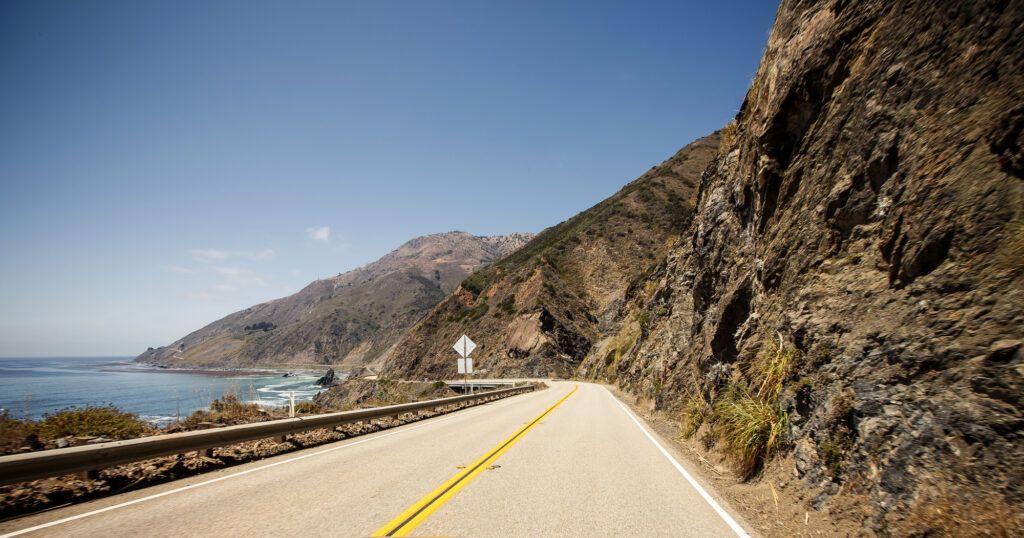
Highway 1 itself is a stunner, hugging the cliffs and winding past Tennessee Valley Trail, Muir Beach, and Stinson Beach.
Don’t want to deal with a car at all? Take the ferry from San Francisco to Sausalito, then hop on a Marin Transit bus to wherever you’re headed.
Click here to learn more about Ferry Transportation in Marin County.
Parking Lots and Accessibility
The Marin Headlands has several designated parking areas, but these lots fill up fast on weekends and holidays. If you want a spot at Battery Spencer or Rodeo Beach, try to arrive before 10 AM.
The Tennessee Valley parking lot is bigger and gives you access to the popular Tennessee Valley Trail. Still, it fills by midday on sunny weekends.

Most parking in the Headlands is free, unlike some other Golden Gate National Recreation Area spots, but keep an eye out for posted time limits.
If you or someone in your group has mobility challenges, the Visitor Center lot has accessible spaces and is close to paved paths that work for wheelchairs and strollers.
Visitor Centers and Information
The Marin Headlands Visitor Center, in the old Fort Barry Chapel, is open Wednesday–Sunday from 9:30 AM to 4:30 PM. They’ve got maps, exhibits, and rangers who know the area inside and out.
The Golden Gate Bridge Welcome Center focuses on the bridge itself, offering info, souvenirs, and educational displays. Rangers are on hand if you have questions or need suggestions.
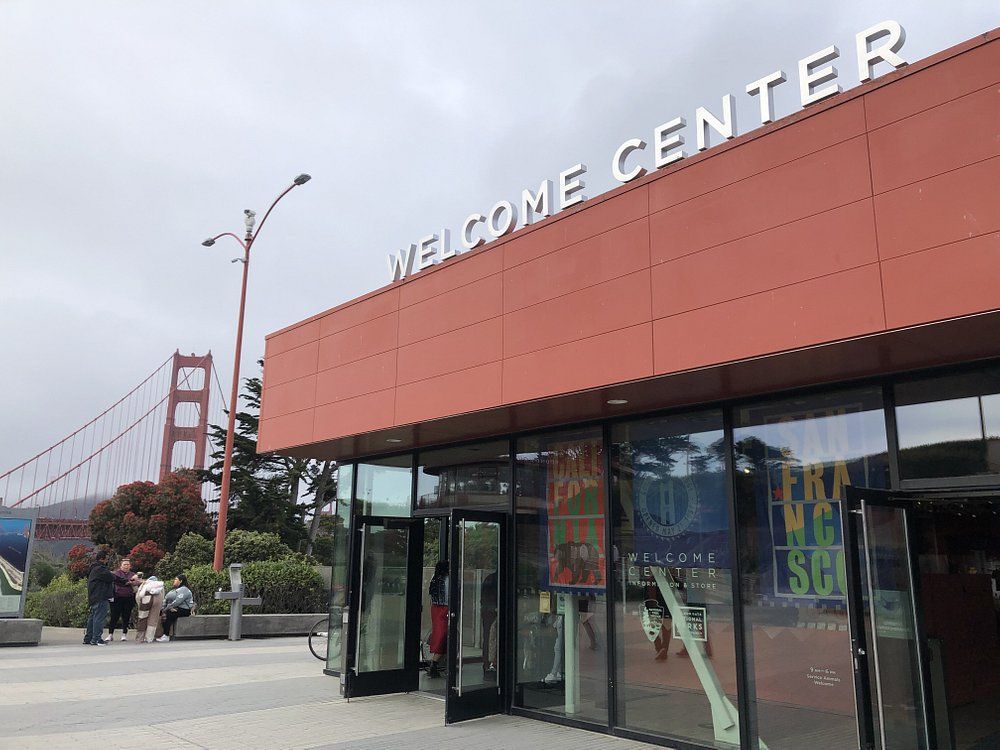
Both centers offer:
- Free park maps
- Ranger-led program schedules
- Restrooms
- Water bottle filling stations
Accessibility is pretty good—there are ramps, accessible restrooms, and large-print materials if you ask for them.
Crissy Field, Cliff House, and Sutro Baths
Crissy Field’s Beach Hut Cafe is great for a casual bite with a view. They serve sandwiches, salads, and hot drinks, and the Warming Hut nearby has snacks and drinks, too.
The historic Cliff House restaurant shut down in 2020, but the building’s still there and worth a look for the views and the architecture.
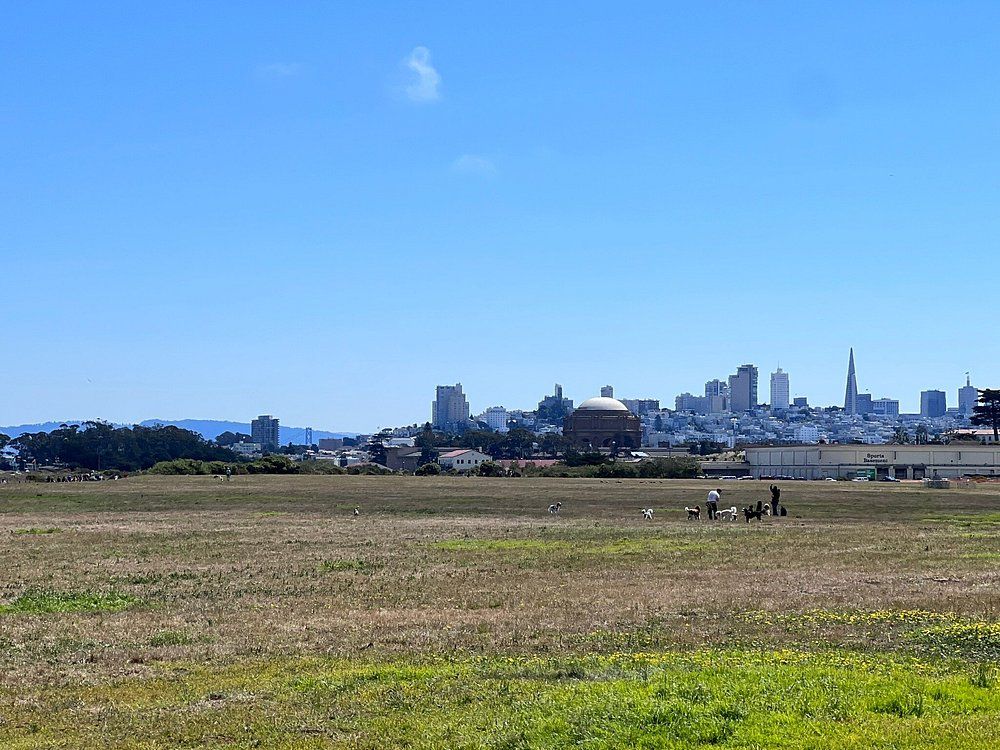
Just down the road, the Sutro Baths ruins are a quirky spot to explore, though there’s nowhere to eat right at the site.
On weekends and holidays, you’ll usually find food vendors near these attractions. Crissy Field and the Cliff House area have restrooms, but facilities at Sutro Baths are pretty limited.
Get a discount of 15% to 70% on accommodation in Marin County! Look for deals here:
Marin County Hotels, Apartments, B&Bs
Day Trips and Extended Adventures
Marin County’s location makes it easy to branch out beyond Golden Gate National Recreation Area. Coastal wilderness, cute towns, and new adventures are all a short drive away.
Point Reyes National Seashore
Point Reyes National Seashore is a fantastic day trip about 30 miles northwest of Golden Gate. This 71,000-acre stretch has dramatic coastline, tons of wildlife, and plenty of room to roam.
The iconic Point Reyes Lighthouse is a must—just be ready for the 300+ steps. It’s worth it if the weather’s clear, but fog sometimes rolls in and hides the view.

Bear Valley Trail is a favorite for hikers: an 8-mile round trip through forest out to the coast. If you’re more into beaches, Limantour Beach stretches for miles and is perfect for walking or a picnic.
Wildlife is everywhere. You might spot tule elk at Tomales Point, harbor seals on the shore, and, if you’re lucky, some of the 490+ bird species that call the area home at different times of year.
Click here to learn more about Point Reyes National Seashore.
Additional Bay Area Escapes
There are plenty of inviting spots outside Marin that make for a fun day out or a spontaneous overnight stay.
Sonoma and Napa Valleys: About an hour northeast, these iconic wine regions are perfect for vineyard tours and tastings. A lot of wineries let you drop in without a reservation, especially during the week.
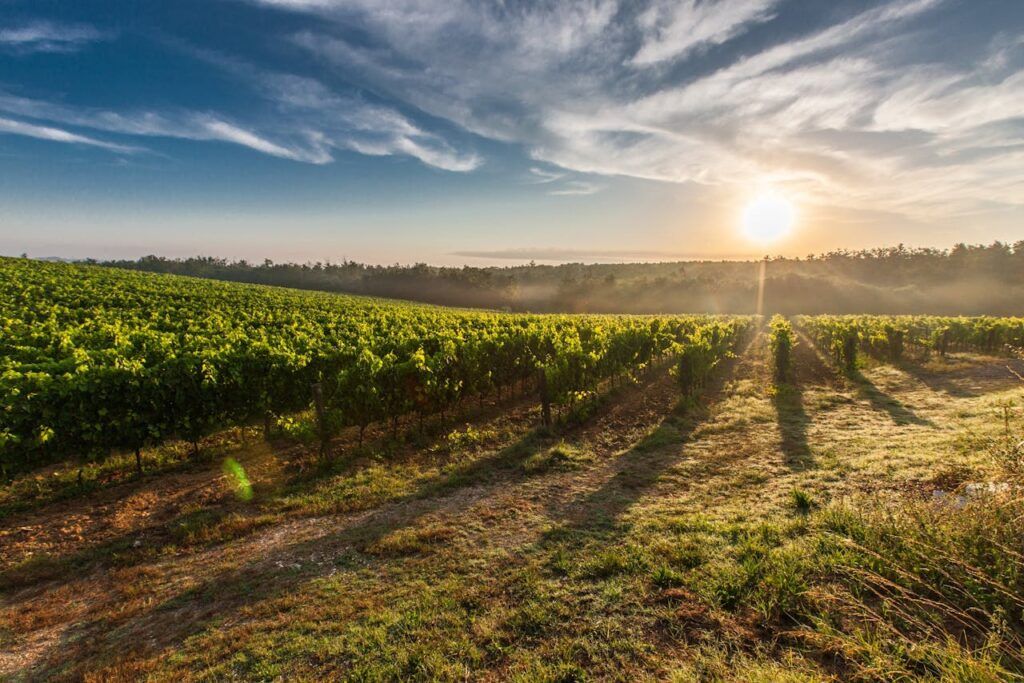
Angel Island State Park: Hop on a ferry from Tiburon and you’ll land on an island with sweeping Bay Area views and plenty of hiking trails. Bring your own bike or rent one there to cruise the 5-mile loop around the island.
Half Moon Bay: If you head 1.5 hours south, you’ll find a laid-back coastal spot with sandy beaches, tide pools, and a Main Street dotted with quirky shops and seafood joints. It’s not fancy, but that’s kind of the point.
Get a discount of 15% to 70% on accommodation in Marin County! Look for deals here:
Marin County Hotels, Apartments, B&Bs


